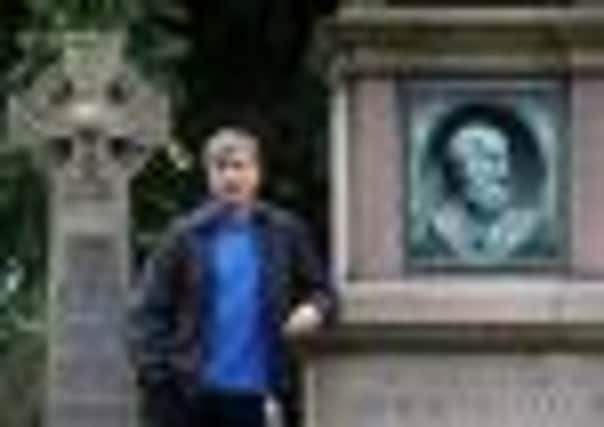How an American art lecturer is helping bring life back to Edinburgh’s cemeteries


Among the toppled gravestones, choking weeds and knotted tree roots, forgotten lairs and once cherished monuments to loved ones, Bob Reinhardt saw something that most who pass Edinburgh’s burial sites might easily overlook.
Surrounded by all this death, his artistic eye took in a wealth of life – nature going about its business turning once crisp, white stone to mottled green and brown, shining bronze plaques dulled by the elements, a sprinkling of snow creating a feathery frame around a tombstone, untamed shrubs and, most poignant of all, the relentless tide of decay.
Advertisement
Hide AdAdvertisement
Hide AdRaised in an area of New York with no fewer than seven cemeteries on its boundaries, he was used to perfectly manicured lairs, line upon line of well-tended tombstones. Now this overgrown vision that sprawled in front of him was a cemetery that seemed strangely alive, largely neglected but ever-changing and rich in artistic gems, most gradually being consumed by the forces of nature.


Warriston Cemetery, he was told, was possibly not the best place for a tourist to be wandering with his camera equipment. “But I was fascinated,” he recalls. “There were beautiful Victorian sculptures, Mother Nature running wild, strangling these age-old angels, broken stones lying on top of each other, and all these important people of their time lying at rest.
“I took some shots, went home to the States and put them away.”
That was ten years ago. Since then he has captured around 28,000 images of mostly Edinburgh graveyards, a unique and fascinating collection which now provides a vital record of the city’s old burial sites.
Fascinating as his photographs are, however, they are not simply an artistic pastime. His images are also helping show how the elements and, sadly, vandals are taking their toll – some of the striking monuments that first caught his eye in 2002 have already been lost, angels decapitated, sculptures with missing hands or noses, stones flattened in the mud.
Now some of Bob’s work – among it shots of some eerie, almost ghostly tombstone sculptures of those lying below ground – will go on public show at Edinburgh Central Library later this month. Accompanying the exhibition will be a series of talks and debates which will look at everything from how to conserve cemeteries – and even harness their tourism potential – to aiding family historians research their roots.
“It’s interesting that this has developed into something completely different,” says Bob, 58, who teaches art in Philadelphia. “What started as some artistic photographs has taken on a totally different meaning.”
Indeed, as his collection of graveyard photographs expanded, Bob showed them to one enthralled curator at the Royal Commission on the Ancient and Historical Monuments Scotland, who recognised their potential. The organisation commissioned more photographs, Bob gave it enough to create eight books of work.
Advertisement
Hide Ad